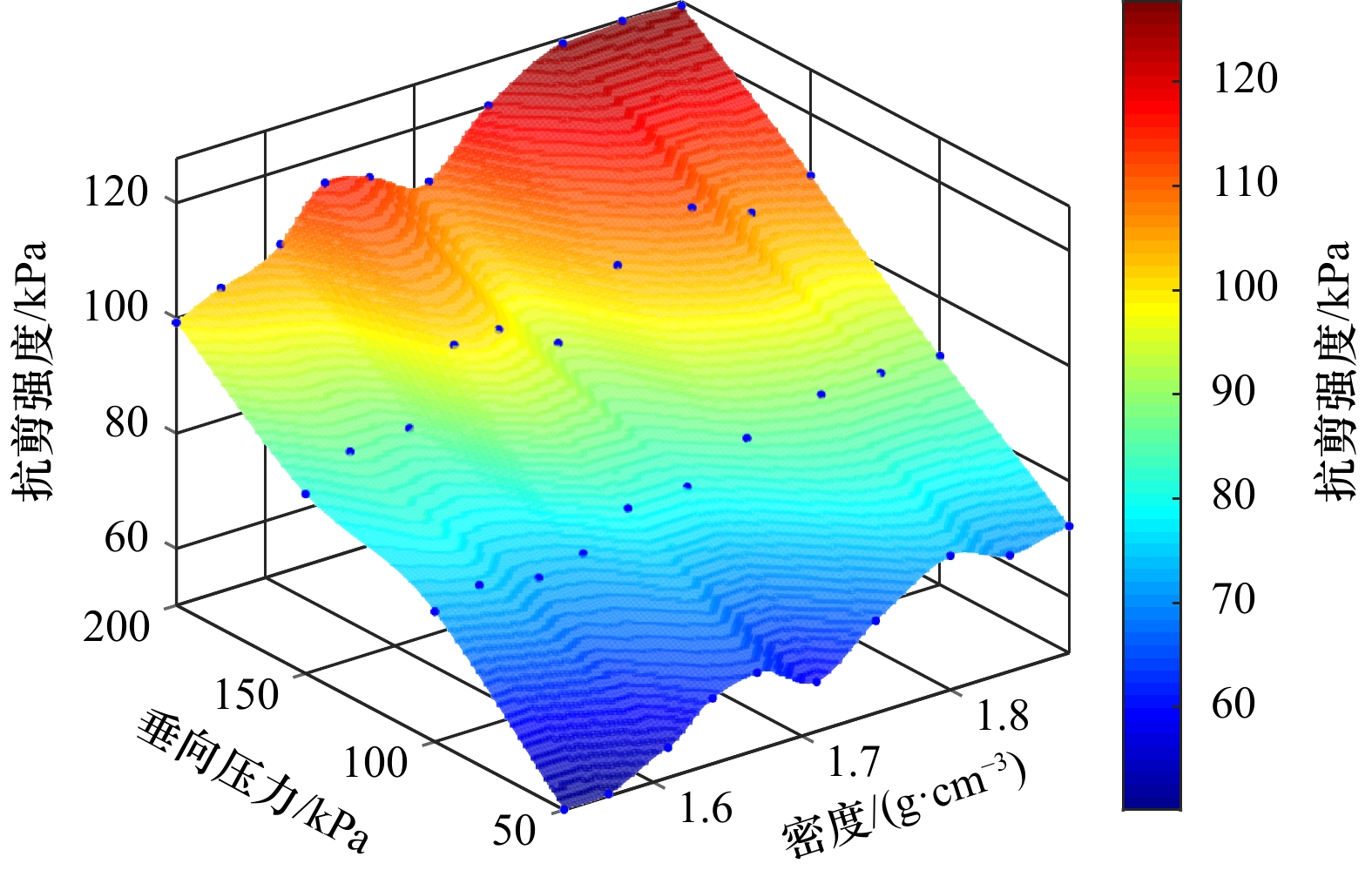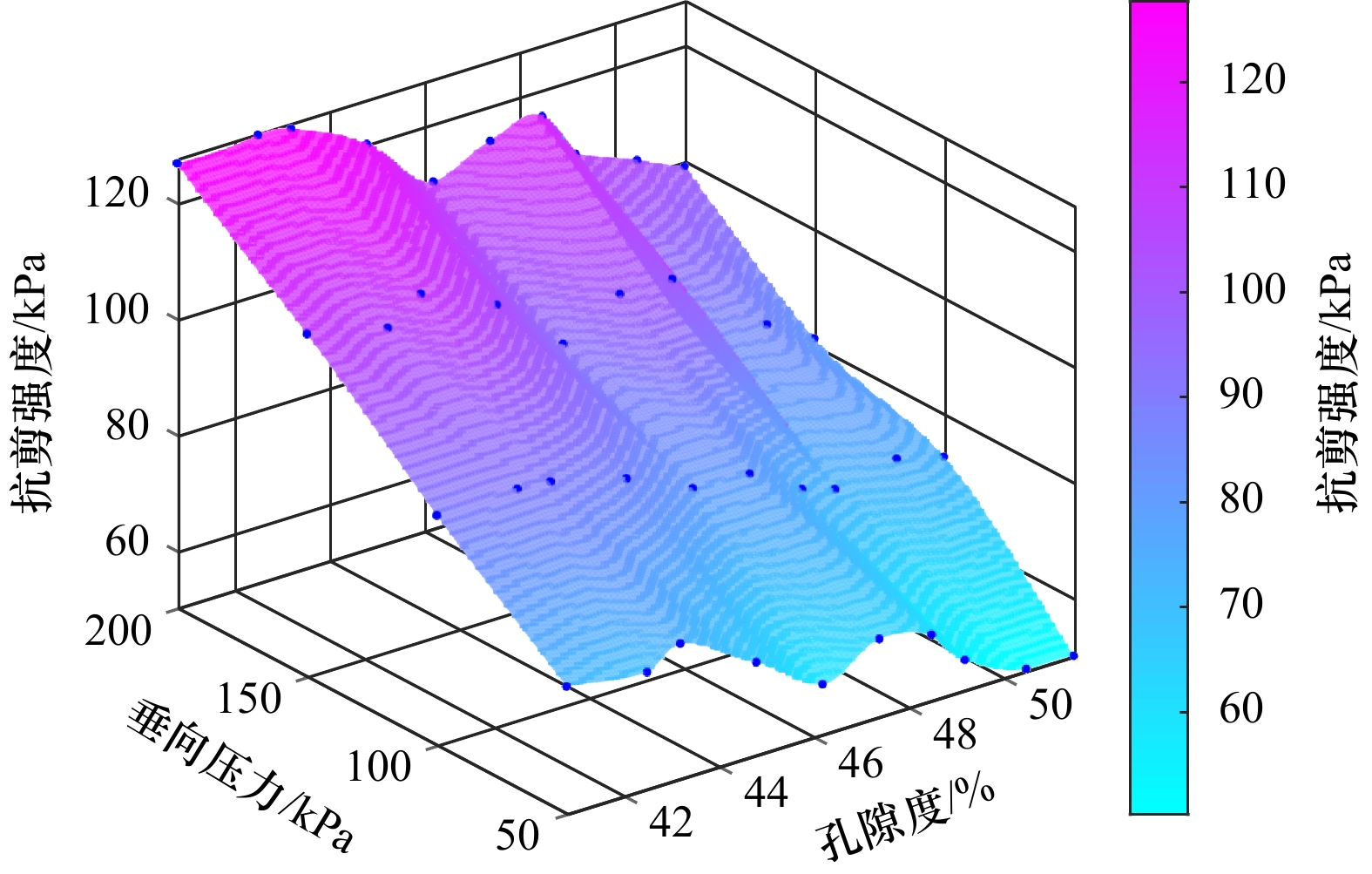Study on the relationship model between P-wave velocity and strength parameters of marine sediments
-
摘要: 海底沉积物具有质地松软、强度低的特点,其强度参数与海上平台插桩就位、导管架的安装等工程关系紧密,与海上作业安全息息相关。常规钻孔取芯与静力触探等强度参数获取方法成本较高、取样点少,且对沉积物扰动较大,利用易获取的声学资料预测海底沉积物的强度参数具有重要研究意义。本文基于Wood方程、Biot-Stoll模型、Dvorkin等效介质模型等声波传播理论,计算不同物性参数(密度、孔隙度)梯度下的理论纵波速度,结合室内模拟地层声学实验,对比了模型计算声速与实测声速的变化特征,建立了声速与物性参数关系模型。基于室内模拟地层土力学试验,揭示了沉积物物性与抗剪强度、黏聚力等参数之间的关系,建立了物性与强度参数关系模型。以物性参数为桥梁,建立基于声学特征的海底沉积物强度参数预测模型。此模型既避免了原位取样沉积物失水扰动的问题,又弥补了经验公式局限性的缺点,具有普适性与准确性,有效提高无法取样地区沉积物强度参数的精度,提高了经济效益,对浅层的勘探与开发起到了理论指导的作用。Abstract: Marine sediments are characterized by soft texture and low strength, and their strength parameters are closely related to offshore platform pile placement and jacket installation, and are closely related to offshore operation safety. Conventional methods for obtaining strength parameters, such as drilling and cone penetration test, have high cost, few sampling points, and great disturbance to the soil. Therefore, it is of great significance to predict the strength parameters of marine sediments with easily accessible acoustic data. Based on the acoustic propagation theories such as Wood equation, Biot-Stoll model and Dvorkin equivalent medium model, the theoretical P-wave velocity under different physical parameter (density, porosity) gradients was calculated. Combined with the indoor simulated stratum acoustic experiment, the variation characteristics of the calculated and measured sound velocity were compared, and the relationship model between sound velocity and physical parameter was established. The relationship between soil physical parameter and shear strength, cohesive force and other parameters was revealed based on laboratory geotechnical test, and the relationship model between soil physical parameter and strength parameters was established. A prediction model for strength parameters of marine sediments based on acoustic characteristics was established by using physical parameters as bridge. This model not only avoids the problem of water loss disturbance of in-situ sampled soil, but also makes up for the limitation of empirical formula. It has universality and accuracy, and can effectively improve the precision of strength parameters of soil in unsampled areas, improve economic benefits, and play a theoretical guiding role in shallow exploration and development.
-
表 1 声波传播理论参数
Tab. 1 Parameters of the theory of acoustic propagation
序号 参数名称 Wood
模型Biot-Stoll
模型Dvorkin等效
介质模型1 孔隙流体密度ρf/(kg·m−3) 1 025 1 025 1 025 2 基质颗粒密度ρg/(kg·m−3) 2 650 2 650 2 650 3 绝对黏度η/(kg·m−3) − 0.001 − 4 密度ρ/(kg·m−3) − 实际 实际 5 孔隙度ϕ/% 实际 实际 实际 6 临界孔隙度ϕc/% − − 38 7 基质颗粒体积模量Kr/Pa 1.47×1010 1.47×1010 1.47×1010 8 基质颗粒剪切模量µr/Pa − − 1.34×1010 9 孔隙流体体积模量Kf/Pa 2.18×109 2.18×109 2.18×109 10 泊松比σ − 0.15 0.15 11 曲折度c − 1.35 − 12 渗透率κ/m2 − 公式(13) − 13 体积衰减系数δb − 0.1 − 14 剪切衰减系数δs − 0.1 − 15 颗粒平均接触次数n − − 8.5 注:“实际”代表各参数根据实际配置情况得到;“−”代表没有取值。 表 2 实验土样基本配置情况
Tab. 2 Basic configuration of experimental soil
序号 密度/(g·cm−3) 孔隙度/% 孔隙比 水质量/g 砂土质量/g 黏土质量/g 1 1.54 51.5 1.06 3 061 11 130 7 420 2 1.57 50.5 1.02 3 122 11 350 7 567 3 1.61 49.2 0.97 3 201 11 638 7 759 4 1.64 48.5 0.94 3 251 11 818 7 879 5 1.67 47.4 0.9 3 320 12 067 8 045 6 1.71 46.2 0.86 3 391 12 327 8 218 7 1.75 44.8 0.81 3 485 12 667 8 445 8 1.8 43.2 0.76 3 583 13 027 8 685 9 1.84 42.5 0.74 3 625 13 177 8 785 10 1.88 40.8 0.69 3 732 13 567 9 045 表 3 纵波速度与物性参数关系
Tab. 3 Relationship between P-wave velocity and physical parameters
序号 参数 函数表达式 R2 RMSE 1 密度ρ ρ=0.669Vp2.699 0.943 1 0.029 19 2 孔隙度ϕ ϕ=1.379Vp−3.161 0.959 4 0.007 65 注:纵波速度单位为km/s,密度单位为g/cm3。 表 4 强度与物性参数关系
Tab. 4 Relationship between strength and physical parameters
参数 函数表达式 R2 RMSE 抗剪强度τ τ=−61.22ρ2+259.2ρ−213.5 0.946 4 1.562 τ=−555.3ϕ2+351.3ϕ+6.81 0.958 0 1.383 黏聚力c c=−70.15ρ2+297.1ρ−256.2 0.924 1 2.161 c=−637.2ϕ2+403.7ϕ−3.845 0.929 1 2.089 内摩擦角φ φ=6.899ρ+7.547 0.565 1 0.740 φ=−21.92ϕ+29.47 0.550 4 0.753 注:抗剪强度、黏聚力单位为kPa,内摩擦角单位为(°)。 表 5 强度参数预测模型
Tab. 5 Prediction model of strength parameters
序号 参数 函数表达式 R2 RMSE 1 抗剪强度τ τ=27.4Vp2.996+1.294Vp1.498−29.89 0.927 7 1.961 2 黏聚力c c=33.13Vp3.022+4.858Vp1.511−40.64 0.928 4 2.267 3 内摩擦角φ φ=−4.594×1010Vp−75.11+20 0.631 6 0.729 注:抗剪强度、黏聚力单位为kPa,内摩擦角单位为(°),纵波速度单位为km/s。 -
[1] 耿雪樵, 徐行, 刘方兰, 等. 我国海底取样设备的现状与发展趋势[J]. 地质装备, 2009, 10(4): 11−16. doi: 10.3969/j.issn.1009-282X.2009.04.002Geng Xueqiao, Xu Xing, Liu Fanglan, et al. The current status and development trends of marine sampling equipment[J]. Equipment for Geotechnical Engineering, 2009, 10(4): 11−16. doi: 10.3969/j.issn.1009-282X.2009.04.002 [2] 王淑云, 鲁晓兵. 深水土工调查技术和分析方法新进展[J]. 海洋工程, 2007, 25(2): 126−130. doi: 10.3969/j.issn.1005-9865.2007.02.020Wang Shuyun, Lu Xiaobing. Recent advances in techniques and analytic methods of deepwater geotechnical investigation[J]. The Ocean Engineering, 2007, 25(2): 126−130. doi: 10.3969/j.issn.1005-9865.2007.02.020 [3] 何旭涛, 张秀峰, 舒琪, 等. 海底麻坑内外土体物理力学特性差异研究[J]. 海洋科学, 2020, 44(2): 131−137. doi: 10.11759/hykx20190415001He Xutao, Zhang Xiufeng, Shu Qi, et al. Study on the differences in physical and mechanical properties of soil inside and outside a seabed pockmark[J]. Marine Sciences, 2020, 44(2): 131−137. doi: 10.11759/hykx20190415001 [4] 王景强, 郭常升, 刘保华, 等. 基于Buckingham模型和Biot-Stoll模型的南沙海域沉积物声速分布特征[J]. 地球学报, 2016, 37(3): 359−367. doi: 10.3975/cagsb.2016.03.13Wang Jingqiang, Guo Changsheng, Liu Baohua, et al. Sound speed distribution of seafloor sediments in Nansha Islands sea based on Buckingham model and Biot-Stoll model[J]. Acta Geoscientica Sinica, 2016, 37(3): 359−367. doi: 10.3975/cagsb.2016.03.13 [5] Gassmann F. Elastic waves through a packing of spheres[J]. Geophysics, 1951, 16(4): 673−685. doi: 10.1190/1.1437718 [6] Biot M A. Theory of propagation of elastic waves in a fluid-saturated porous solid. II. Higher frequency range[J]. The Journal of the Acoustical Society of America, 1956, 28(2): 179−191. doi: 10.1121/1.1908241 [7] Biot M A. Generalized theory of acoustic propagation in porous dissipative media[J]. The Journal of the Acoustical Society of America, 1962, 34(9A): 1254−1264. doi: 10.1121/1.1918315 [8] Biot M A. Generalized boundary condition for multiple scatter in acoustic reflection[J]. The Journal of the Acoustical Society of America, 1968, 44(6): 1616−1622. doi: 10.1121/1.1911304 [9] Buckingham M J. Theory of acoustic attenuation, dispersion, and pulse propagation in unconsolidated granular materials including marine sediments[J]. The Journal of the Acoustical Society of America, 1997, 102(5): 2579−2596. doi: 10.1121/1.420313 [10] Buckingham M J. Theory of compressional and shear waves in fluidlike marine sediments[J]. The Journal of the Acoustical Society of America, 1998, 103(1): 288−299. doi: 10.1121/1.421091 [11] Hamilton E L. Sound velocity and related properties of marine sediments, North Pacific[J]. Journal of Geophysical Research, 1970, 75(23): 4423−4446. doi: 10.1029/JB075i023p04423 [12] 侯正瑜, 郭常升, 王景强. 南沙海域深水区表层沉积物声速与孔隙度相关关系[J]. 海洋科学, 2013, 37(7): 77−82.Hou Zhengyu, Guo Changsheng, Wang Jingqiang. Surface sediments acoustic velocity and porosity correlation in Nansha sea area abyssal region[J]. Marine Sciences, 2013, 37(7): 77−82. [13] Zheng Jiewen, Liu Baohua, Kan Guangming, et al. The sound velocity and bulk properties of sediments in the Bohai Sea and the Yellow Sea of China[J]. Acta Oceanologica Sinica, 2016, 35(7): 76−86. doi: 10.1007/s13131-016-0906-x [14] Kim D C, Sung J Y, Park S C, et al. Physical and acoustic properties of shelf sediments, the South Sea of Korea[J]. Marine Geology, 2001, 179(1/2): 39−50. [15] Duan Wei, Cai Guojun, Liu Songyu, et al. Correlations between shear wave velocity and geotechnical parameters for Jiangsu clays of China[J]. Pure and Applied Geophysics, 2019, 176(2): 669−684. doi: 10.1007/s00024-018-2011-x [16] 黄雅虹, 吕悦军, 彭艳菊, 等. 渤海海域黏性土剪切波速与抗剪强度统计关系的初步研究[J]. 中国地震, 2020, 36(3): 527−538. doi: 10.3969/j.issn.1001-4683.2020.03.015Huang Yahong, Lü Yuejun, Peng Yanju, et al. A preliminary study on statistical relationship between shear wave velocity and shear strength of clayey soil in Bohai Sea area[J]. Earthquake Research in China, 2020, 36(3): 527−538. doi: 10.3969/j.issn.1001-4683.2020.03.015 [17] Stoll R D. Acoustic waves in ocean sediments[J]. Geophysics, 1977, 42(4): 715−725. doi: 10.1190/1.1440741 [18] Dvorkin J, Prasad M, Sakai A, et al. Elasticity of marine sediments: rock physics modeling[J]. Geophysical Research Letters, 1999, 26(12): 1781−1784. doi: 10.1029/1999GL900332 [19] Helgerud M B, Dvorkin J, Nur A, et al. Elastic-wave velocity in marine sediments with gas hydrates: effective medium modeling[J]. Geophysical Research Letters, 1999, 26(13): 2021−2024. doi: 10.1029/1999GL900421 [20] Schock S G. A method for estimating the physical and acoustic properties of the sea bed using chirp sonar data[J]. IEEE Journal of Oceanic Engineering, 2004, 29(4): 1200−1217. doi: 10.1109/JOE.2004.841421 [21] 潘国富. 南海北部海底浅部沉积物声学特性研究[D]. 上海: 同济大学, 2003.Pan Guofu. Research on the acoustic characteristics of seabed sediments in the northern South China Sea[D]. Shanghai: Tongji University, 2003. [22] Hou Zhengyu, Guo Changsheng, Wang Jingqiang, et al. Seafloor sediment study from South China Sea: acoustic & physical property relationship[J]. Remote Sensing, 2015, 7(9): 11570−11585. doi: 10.3390/rs70911570 [23] 卢博, 李赶先, 黄韶健, 等. 中国黄海、东海和南海北部海底浅层沉积物声学物理性质之比较[J]. 海洋技术, 2005, 24(2): 28−33. doi: 10.3969/j.issn.1003-2029.2005.02.008Lu Bo, Li Ganxian, Huang Shaojian, et al. The comparing of seabed sediment acoustic-physical properties in the Yellow Sea, the East China Sea and northern the South China Sea[J]. Ocean Technology, 2005, 24(2): 28−33. doi: 10.3969/j.issn.1003-2029.2005.02.008 [24] 卢博, 李赶先, 刘强, 等. 海南岛东南外海海底沉积物特征及其声学物理性质研究[J]. 海洋学报, 2007, 29(4): 34−42.Lu Bo, Li Ganxian, Liu Qiang, et al. A study on seafloor sediment and its acouso-physical properties in the southeast offshore sea area of Hainan Island in China[J]. Haiyang Xuebao, 2007, 29(4): 34−42. [25] Wang Jingqiang, Guo Changsheng, Hou Zhengyu, et al. Distributions and vertical variation patterns of sound speed of surface sediments in South China Sea[J]. Journal of Asian Earth Sciences, 2014, 89: 46−53. doi: 10.1016/j.jseaes.2014.03.026 [26] 王星华, 黄长溪, 隆威. 直接快剪条件下黏土抗剪强度影响因素探讨[J]. 铁道科学与工程学报, 2012, 9(5): 46−49. doi: 10.3969/j.issn.1672-7029.2012.05.009Wang Xinghua, Huang Changxi, Long Wei. Shear strength factors of clayey soils under the condition of direct fast shear[J]. Journal of Railway Science and Engineering, 2012, 9(5): 46−49. doi: 10.3969/j.issn.1672-7029.2012.05.009 [27] Liu Baohua, Han Tongcheng, Kan Guangming, et al. Correlations between the in situ acoustic properties and geotechnical parameters of sediments in the Yellow Sea, China[J]. Journal of Asian Earth Sciences, 2013, 77: 83−90. doi: 10.1016/j.jseaes.2013.07.040 [28] Gardner G H F, Gardner L W, Gregory A R. Formation velocity and density—The diagnostic basics for stratigraphic traps[J]. Geophysics, 1974, 39(6): 770−780. doi: 10.1190/1.1440465 [29] Castagna J P, Batzle M L, Eastwood R L. Relationships between compressional-wave and shear-wave velocities in clastic silicate rocks[J]. Geophysics, 1985, 50(4): 571−581. doi: 10.1190/1.1441933 -





 下载:
下载:





